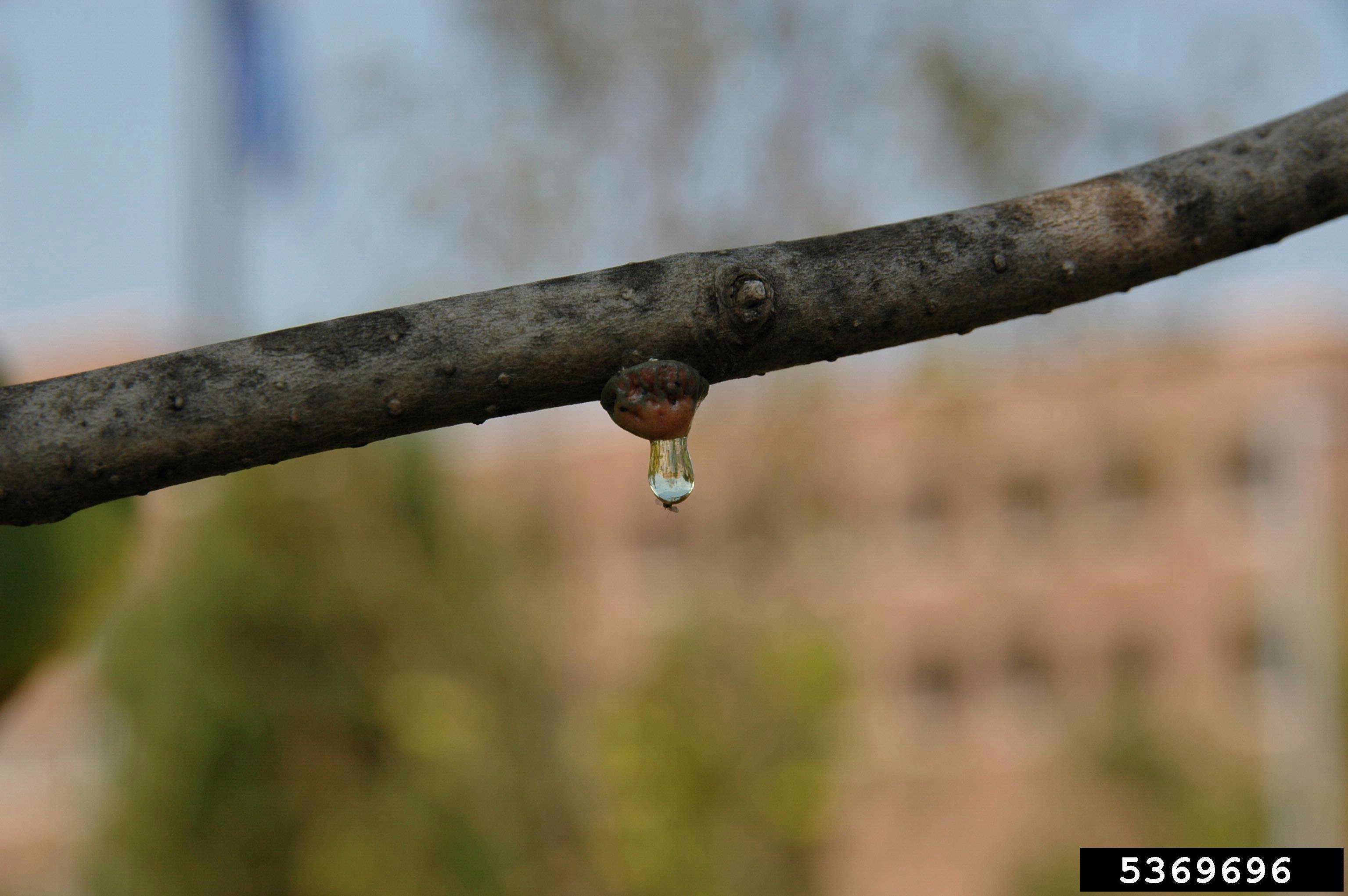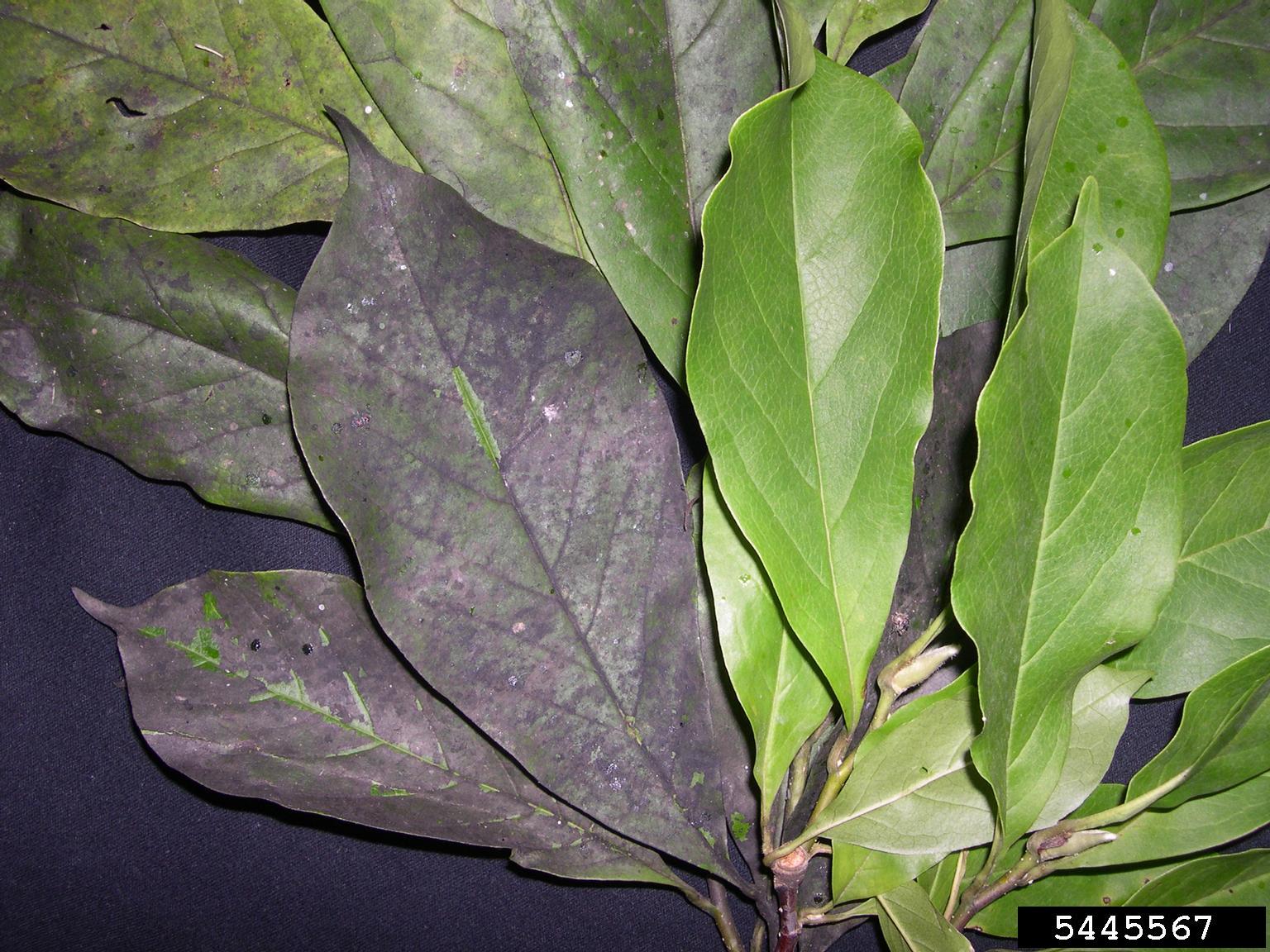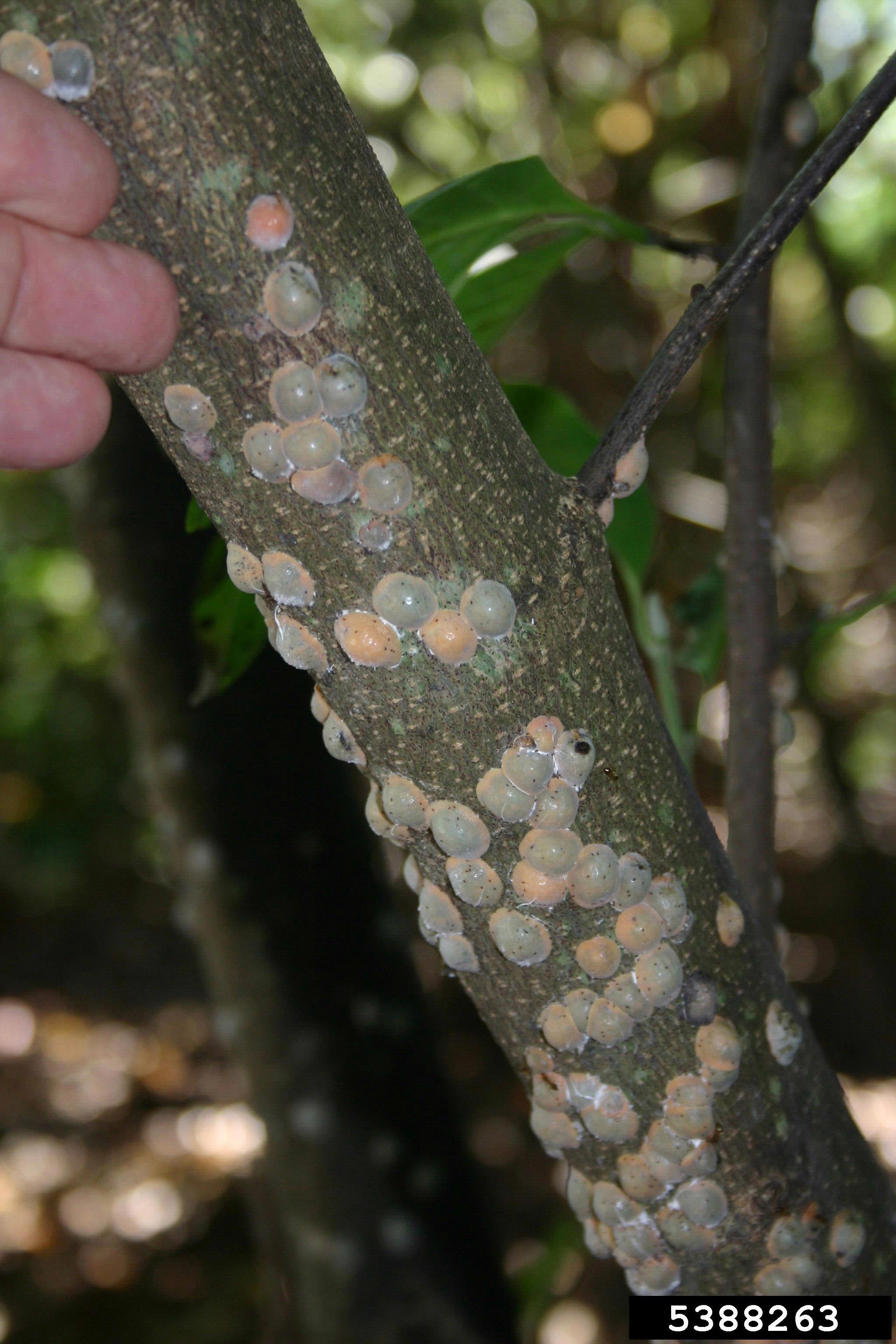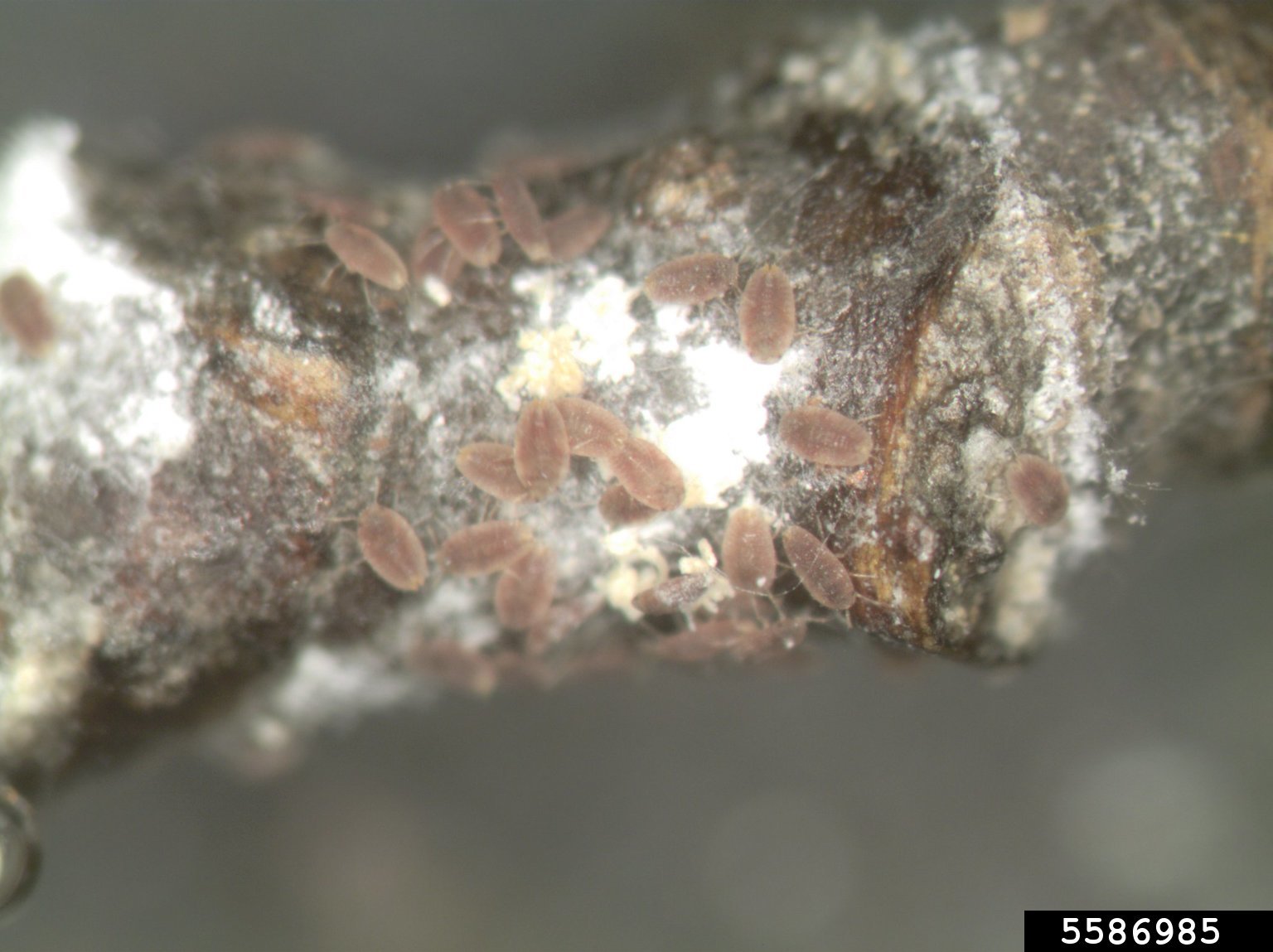Identifying and managing magnolia scale
Sticky plants, sticky sidewalk, sticky drops falling from the magnolia tree? Look to the branches, it’s probably magnolia scale.

Magnolia scale (Neolecanium cornuparvum) commonly infest star magnolia, saucer magnolia, cucumber tree and lily magnolia. Often confused with fungal growth, magnolia scale resembles fluffy, white patches on the young branches of magnolia trees (Photo 1). Scale insects have a protective, soft, waxy, shell-like covering that is easy to crush, but helps disguise the insect until a tree is infested. Magnolia scale grows up to a 0.5-inch diameter and one of the largest scale insects found in the United States.
Magnolia scale has a yearlong lifecycle and goes through many physical changes during this time, including crawler, nymph and adult life stages. Knowing which life stage is present will provide clues for the appropriate time to apply insecticides.
Both female and male scales undergo significant changes in their appearance as they mature. Tiny, dark nymphs overwinter on 1- to 2-year-old twigs. As temperatures warm in the spring, the scales resume feeding. The males remain small, about 0.125 inches, and turn waxy white. Later in the summer, they emerge as tiny, pink to yellow gnat-like insects. Males do not cause damage as they do not have mouthparts and they die shortly after mating with females.
The females stay on the branches, feeding and growing, developing their shell-like scale covering and turning brownish purple. In early August, the females look white because of a thin coating of white powdery wax over the scale. At this stage, as the females are feeding, they remove large quantities of sap from twigs and young branches with their piercing-sucking mouthparts. Magnolia scale excretes a sticky, sweet substance called honeydew, which attracts ants, yellow jackets and other insects that feed on it (Photo 2).

A fungus called sooty mold can grow on the honeydew, resulting in blackened leaves and branches, as well as on the plants and ground under the magnolia tree. The appearance of black sooty mold (Photo 3) is often a sign of a more serious outbreak of scale insects on landscape plants. Heavily infested branches can be completely covered by scale and may be weakened or killed by it.

By mid- to late August, females begin to turn a yellow-tan color and lose their coating of wax (Photo 4). They give birth to tiny crawlers (Photo 5), which will find a place on the young magnolia branches to overwinter and begin the cycle again.


Timing is most important when using insecticides
Timing when the crawlers will emerge is easily predicted through Michigan State University’s magnolia scale model on Enviroweather. This online site operates a series of weather stations across the state that provide localized data on temperature, including growing degree-days. Since stages of an insect’s life cycles are temperature dependent, it is possible to use daily air temperature measurements to accurately time insect development and, in this case, egg hatch.
Pesticide applications timed with growing degree-days are not only more effective but help to reduce needless applications and incorrectly using a pesticide on the same date each year.
Horticultural oils, often called summer oils, applied after the crawlers have emerged, usually in late August, can be very effective in reducing the scale population. Oils can also be applied in fall before freezing weather and again in early spring before the flower buds swell to kill the overwintering nymphs located on the stems.
Although horticultural oils applied during the crawler stage are considered most effective, systemic insecticides containing the active ingredient Imidacloprid, can be applied as a soil drench at the root zone of the infested tree. Water movement within the tree will transport the systemic insecticide from the roots up the tree to where the scale is feeding. This type of treatment is applied a few weeks before crawlers hatch to allow the insecticide time to move through the tree, usually early May. Before using any pesticide, be sure to read, understand and follow the labelled directions.
Nonchemical control methods, such as removing heavily infested branches, pruning to open the canopy of the tree to more sunlight, or simply brushing off the scale with a sponge are also effective measures to keep the scale population under control.
Proper irrigation and fertilizing will keep magnolia trees healthy and deter magnolia scale infestations from becoming a sticky situation.
Thank you to David Lowenstein and Sarah Hughson from Michigan State University for their review of this article.



 Print
Print Email
Email